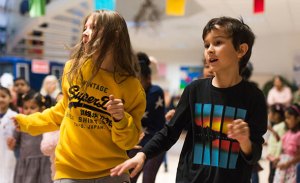July 14, 2023
Morning Move at ISZN
Nursery teacher Juan Mejia explains what morning move is and what the benefits are for our students.
Today, we as educators have a great challenge in helping developing the children who pass through our classrooms, because realities such as globalization and migratory movements mean that students from different ethnic, religious and cultural backgrounds are living together. Given this reality, primary school is an ideal time to teach intercultural values, characterized by coexistence and appreciation for cultural diversity.
The ISZN school aims to educate children in interculturality, using dance as a resource inside the classroom at all stages of infants’ and primary education. For this we have designed an intervention that we have called the Morning Move Programme.
The Morning Move Programme is a teaching proposition which encompasses dance, customs, geography and languages, in which children learn to live together and to get to know each other through their bodies, generating personal well-being and promoting their intercultural education.

As has been repeatedly shown, physical exercise brings benefits to children at this educational stage. Dance and dancing, as artistic and cultural expressions, provide the same advantages as physical exercise with other added values.
For instance, the possibility for children to learn to coordinate movement, developing their cognition, helps them to gain flexibility, to work as a team, among other benefits, while sharing the story of other cultures, through one of the most valuable traditions, dance.
On the other hand, interculturality is a social reality today, and educating on this topic during the infants’ and primary stages requires different tools and resources so that students can access this information. ISZN teachers have designed the Dance Programme that makes dancing the main focus of physical exercise and is at the same time an intercultural resource.
As an intercultural resource, it is a programme that uses and promotes the teaching of foreign languages and the exchange of information and knowledge about the different dances of the world, as well as of the countries or regions where these forms of expression originate.
